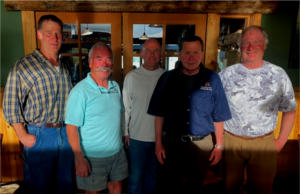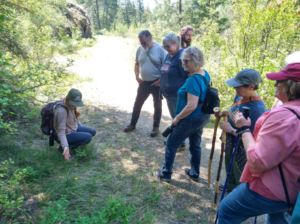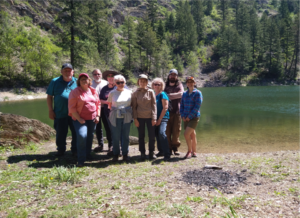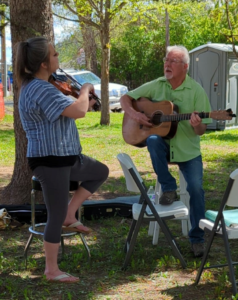Local TU chapter hears FWP plans to improve Kootenai River
Twenty-eight anglers, river guides, fisheries biologists and hydrologists gathered at the River Bend Restaurant recently for the Kootenai River Trout Club’s chapter of Trout Unlimited to hear plans to improve both water quality and habitat along the Kootenai River. Montana Fish, Wildlife & Parks Fisheries Biologist Jim Dunnigan explained the agency’s five-year plan to improve water quality – providing a more balanced chemistry – for the Kootenai River with goals to increase phosphorus levels to counter the increased nitrates as a result of open-pit mine blasting from coal mines in British Columbia.
A side-effect of blasting is nitrates, which ultimately find their way into the watershed. The Canadian province is a watershed into the Kootenai Basin. Dunnigan said only 10 percent of the natural phosphorus flowing into Lake Koocanusa escapes past the dam, resulting in a excesses of nitrogen beyond the dam that leads to elevated levels of Didymosphenia geminata, aka didymo or “rock snot,” as many anglers less-than-affectionately refer. Didymo alters stream ecology by forming dense algal blooms that can cover up to 100 percent of stream bottoms, and therefore threatens insect development, affecting streams at its most organic level. The FWP plan is to fight didymo by increasing phosphorus levels initially by 1 part per billion. The phosphorus will counter the nitrogen levels and, ideally, bring the stream back to within normal levels while fighting didymo, Dunnigan said. “This wasn’t an easy sell to the regulating agencies,” Dunnigan said, most notably the Montana Department of Environmental Quality. “Over the course of the season, tons of product will be released (into the river.)” Dunnigan added the Idaho fisheries agencies, with backing of the Kootenai and Salish Tribes, are planning to add phosphorus to the Kootenai River downstream at greater levels than Montana FWP. “We will gradually increase our levels of 1 part per billion to up to 3.7 parts per billion by the first of October,” Dunnigan said, all the while as the agency monitors the effectiveness. The point of entry will be an electronic dispensary just below the dam, he said.
TU members also heard from Gregory Hoffman, also a fisheries biologist at the U.S. Army Corps of Engineers at Libby Dam. Hoffman said the Corps plans to increase fish habitat along the Kootenai River by adding large trees of at least 26-feet in length with root-ball structures. Hoffman said the Corps is looking to do this during June, July and August. “We’re putting them into the river and letting the Kootenai do with them what she may,” Hoffman said. Chapter members also voted Alan Gerstenecker as its new president, taking over the reins from Past-President Mike Rooney. Guide and outfitter Tim Linehan nominated Gerstenecker for the presidency. Asked about his plans for the Kootenai River Trout Club Trout Unlimited chapter, Gerstenecker said he envisions working closely with the state and federal agencies for the betterment o f Lake Koocanusa and the Kootenai River. “I think this chapter needs to keep its hands on the pulse of the Kootenai River while working with Fish, Wildlife & Parks and the Corps to improve the health of this river,” Gerstenecker said. “A healthy Kootenai River benefits all of Lincoln County and the towns downstream through which this river flows. There is a multitude of science behind these plans. This river is our heritage.” For more information about Montana Trout Unlimited, go to montanatu.org or reach out to the chapter email at libbymt406.tu@gmail.com.
Submitted by Libby chapter of Trout Unlimited
Pictured from left to right are USAC Fisheries Biologist Gregory Hoffman, Past Chapter President Mike Rooney, Outfitter Tim Linehan, FWP Fisheries Biologist Jim Dunnigan and Outfitter Dave Blackburn. Photo Courtesy of Libby chapter of Trout Unlimited
Mother’s Day Wildflower Walk to Shannon Lake
By Ashley South
Yaak Valley Forest Council and Wild Montana co-hosted their annual Wilderness Walk to Shannon Lake on May, 14th to celebrate Mother’s Day and identify native wildflowers. This year ten participants joined the wildflower walk. Tucked in the northern foothills of the Cabinet Mountains, the Shannon Lake Trail winds through a narrow, forested basin with minimal elevation gain.
Along the trail their were discussions about native and non-native plants, with a major focus on wildflower identification, their were views of the Kootenai River Valley and the Southern Purcell Mountains. The Wilderness Walks Program was started in 1960, by The Montana Wilderness Association, now know as Wild Montana. The hikes are volunteer lead across Montana and have hundreds of participants and partnerships each year.
Live Music Libby Lofts Vendor Market
Live music by Rod and Anna at the Libby Lofts Vendor Market Friday, May 12th
Submitted by Libby Lofts Vendor Market




